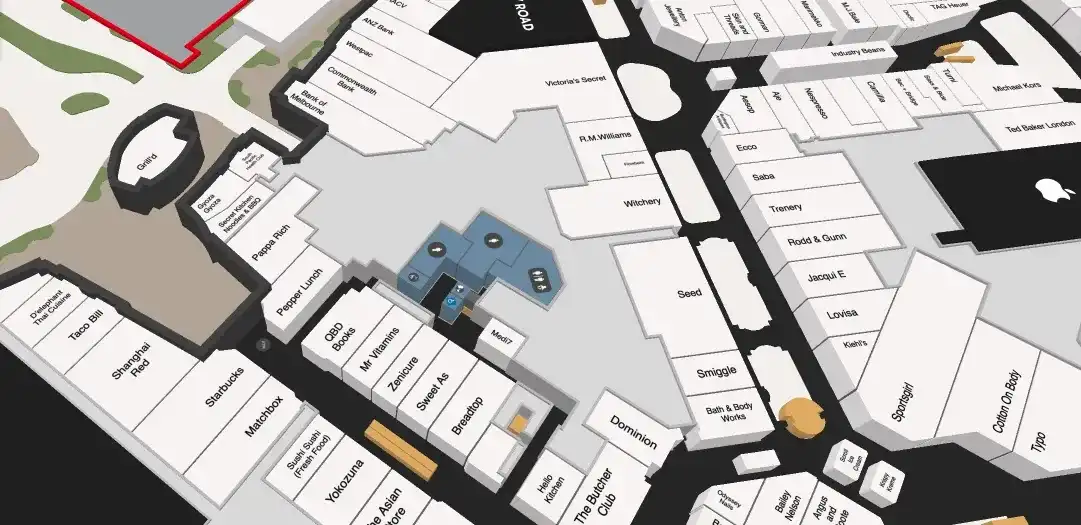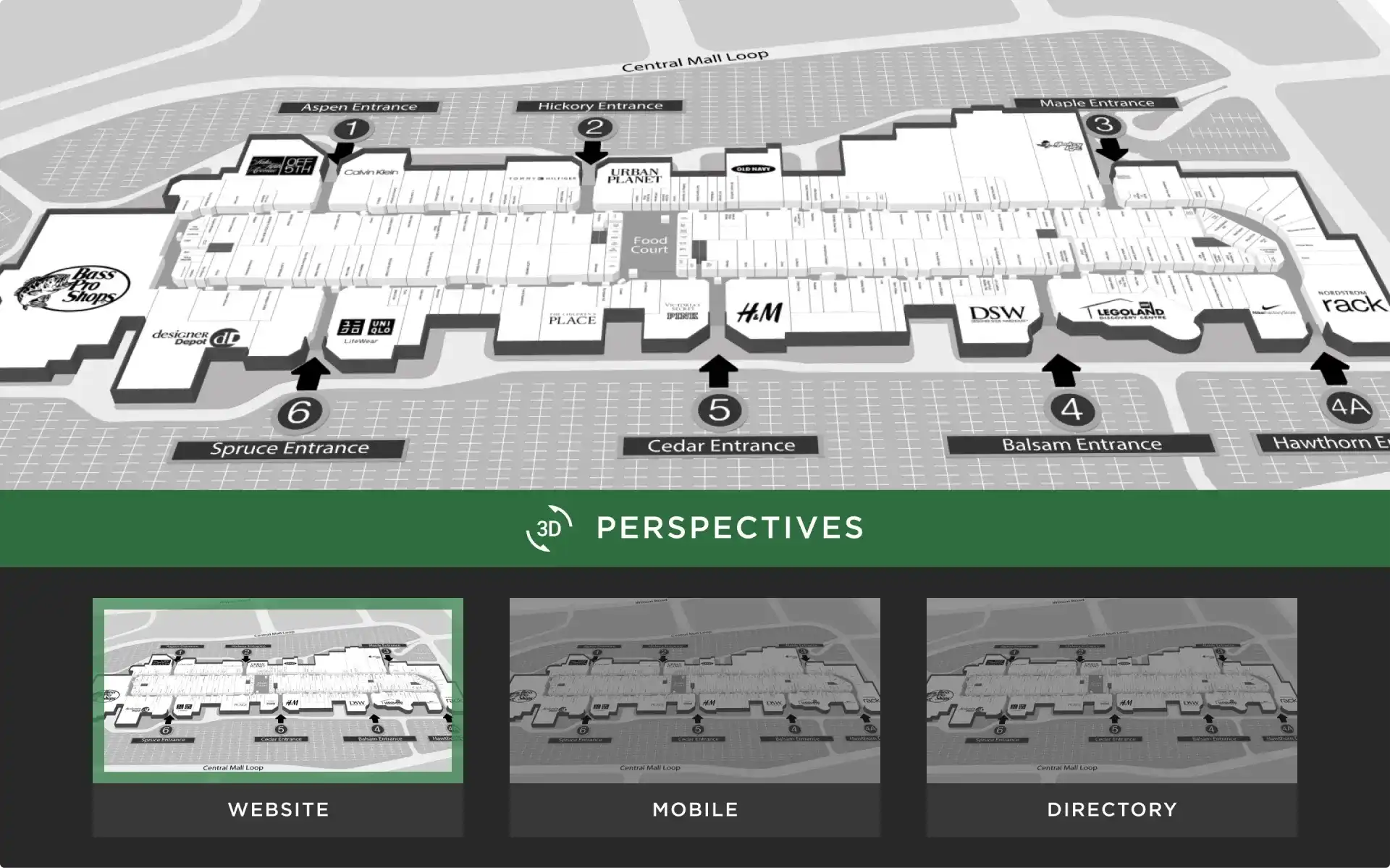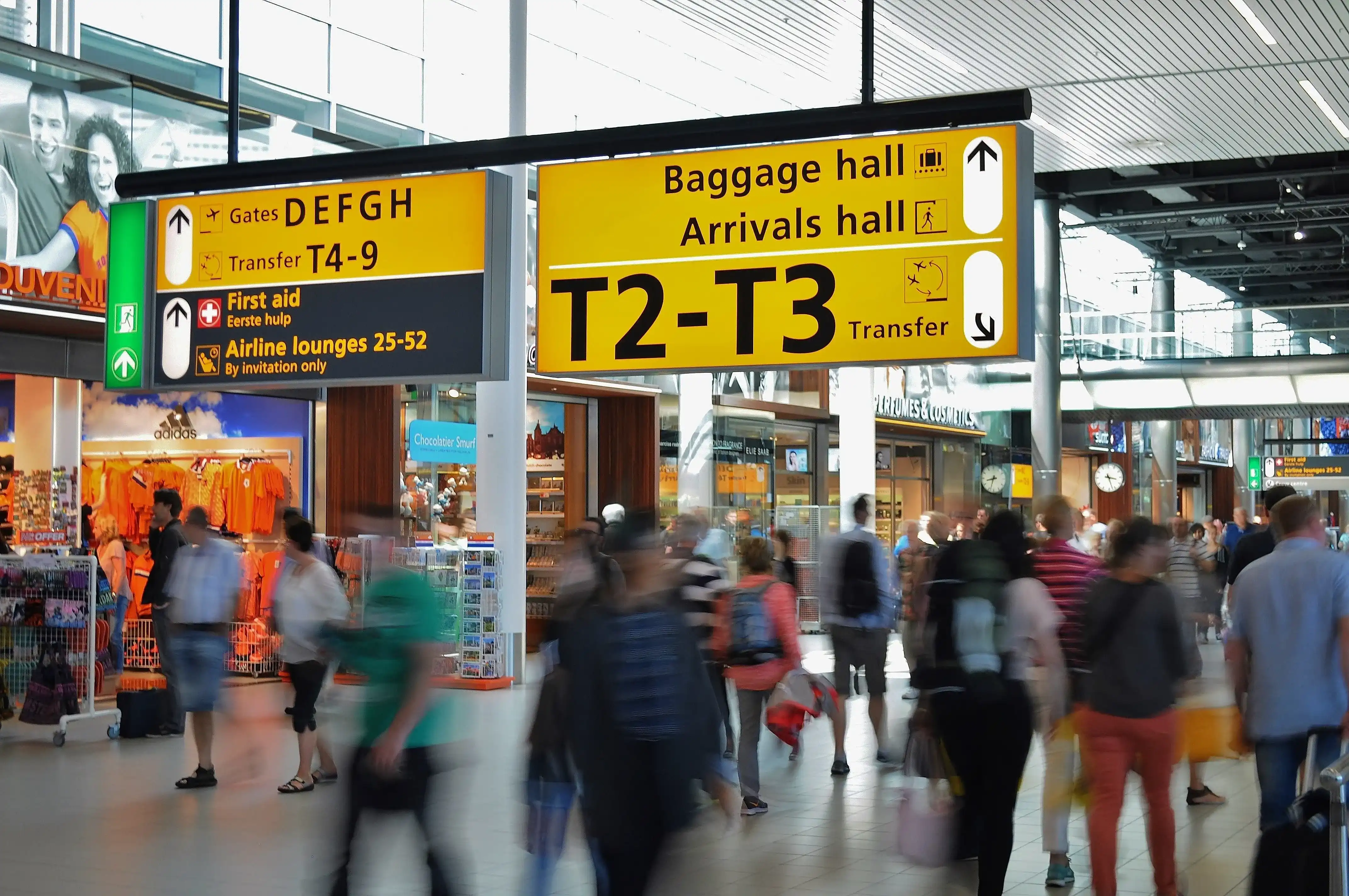Discover the world of indoor maps, where cutting-edge technology transforms floor plans into digital, interactive representations of indoor spaces. From efficient navigation in large buildings to streamlined visualization, join us as we explore the process, applications, and benefits of indoor maps – a versatile solution that anyone can harness.
What is indoor mapping?
Indoor mapping is the innovative process of transforming traditional floor plans into digital representations, offering a dynamic and interactive view of indoor spaces. This technology serves as a navigational aid, particularly in large buildings where finding your way can be challenging. By digitizing floor plans, it makes the data available open for use cases such as indoor mapping, navigation and wayfinding, indoor positioning, safety and security, and much more. It also enhances our overall understanding of indoor environments.
Indoor mapping and visualization
The core of indoor mapping lies in its ability to visualize (and often simplify) complex indoor spaces. This technology brings floor plans to life, making them easily comprehensible and accessible. Visualizing indoor maps enables users to gain a streamlined understanding of the layout and enhance overall spatial awareness.

How does indoor mapping work?
Whether through dedicated indoor mapping platforms or user-friendly self-serve mapping tools, the process of creating indoor maps involves converting static floor plans into interactive, navigable solutions. This digital transformation not only optimizes routes between locations but also serves as a versatile data foundation for use in diverse applications. From enhancing indoor positioning to facilitating workspace optimization, safety and security measures, and even enabling targeted advertising through digital signage, indoor mapping unfolds as a multifaceted solution with applications across various industries.
Where can indoor maps be used?
Stadiums, educational institutions, airports, healthcare facilities, and shopping centers are just a few examples of spaces that can leverage indoor mapping technology. Essentially, any location with intricate indoor layouts can benefit from the clarity and functionalities that indoor maps provide, unlocking a spectrum of solutions for various needs.
Benefits of indoor mapping for guests
Indoor maps redefine the way visitors explore and engage with indoor environments, offering a host of benefits, including:
- Effortless navigation: people can easily navigate complex indoor spaces, discovering points of interest, amenities, and specific areas with minimal effort.
- Time savings: visitors can efficiently plan their routes, saving time and ensuring a seamless exploration of the venue.
- Interactive exploration: guests can interact with the indoor map to explore various attractions, facilities, and services, fostering a more engaging and immersive experience.
- Personalized recommendations: indoor mapping technology can provide personalized recommendations based on guest preferences, guiding them to relevant points of interest and enhancing their overall enjoyment.
Benefits of indoor mapping for venues
Indoor mapping technology stands as a versatile solution, delivering significant benefits to businesses across diverse industries. Here's a concise overview of how venue owners and their management teams can leverage its universal advantages:
- Enhanced customer experience: venue marketing and customer teams can ensure visitors easily find what they're looking for, saving time and enhancing satisfaction with real-time navigation.
- Operational efficiency: venue operations and facility teams can optimize space utilization and resource management effectively, enhancing operational efficiency in any setting.
- Increased revenue opportunities: unlocking targeted advertising and optimized retail layouts, venue owners can capitalize on revenue growth in retail spaces, shopping centers, and beyond.
- Emergency preparedness: venue facility and security teams can enhance safety measures by utilizing indoor mapping to guide individuals during emergencies, contributing to a secure environment within the venue.
- Data-driven decision making: venue owners can make informed decisions by leveraging indoor mapping's insights into customer behavior and preferences, fostering smarter business choices.
Using indoor maps to view floor plans
Indoor maps serve as a valuable tool for viewing floor plans. Whether for residential or commercial spaces, the technology allows users to interact with detailed floor layouts, offering insights into its spatial organization. Businesses can utilize indoor maps to showcase floor plans, aiding in marketing, event planning, and overall space management.
Turn-by-turn directions
One of the primary functionalities of indoor mapping is to provide turn-by-turn directions inside buildings (and even from building to building!). This navigation feature helps users easily reach their desired destinations, even in the most complex and confusing indoor environments.

Localization
Indoor mapping's ability to accurately localize individuals within a building enhances safety and convenience. This feature is particularly useful in emergency situations and for optimizing the overall navigation experience.
SDKs
Software Development Kits (SDKs) are integral components of indoor mapping, providing venues with versatile tools to customize and optimize their mapping solutions. By integrating SDKs, venues can tailor indoor mapping functionalities to their specific needs, enhancing the overall user experience. These development kits empower venues to adapt and innovate, ensuring seamless integration and compatibility with other systems.
APIs
Application Programming Interfaces (APIs) play a key role in the functionality of indoor mapping systems. APIs enable seamless communication between different software applications, allowing venues to integrate indoor mapping data with other systems and services.
Integrations
Through seamless integrations with SDKs and APIs, indoor mapping becomes a versatile solution. Businesses can tailor indoor mapping technology and build custom applications to suit their specific needs, integrating it into existing systems or apps to enhance functionality and user experience.
Data management
Efficient data management is a key benefit of indoor mapping for venues. The technology facilitates the organization and analysis of spatial data, contributing to better-informed decision-making and operational efficiency.
CMS
Content Management Systems (CMS) streamline the management of indoor mapping content, offering venues a user-friendly platform to update and customize their maps. Through a CMS, venues can easily modify information, incorporate new features, and adapt the mapping system to evolving needs. This simplifies the process of keeping indoor maps up-to-date, ensuring accuracy and relevance for both guests and venue operators.

Key takeaways
Indoor mapping technology transforms traditional floor plans into dynamic, interactive representations, offering navigational aid and enhancing overall spatial awareness.
- Universal applications: from businesses and educational institutions to healthcare facilities and shopping centers, indoor mapping solutions can handle various indoor layouts for many sectors.
- Enhanced experiences: guests benefit from effortless navigation, time savings, interactive exploration, and personalized recommendations, while venue owners can optimize operations, increase revenue, ensure safety, and make informed decisions.
- Technology integration: Seamless integration with SDKs, APIs, and CMS empowers venues to customize and optimize indoor mapping solutions for enhanced functionality and user experience.
Indoor maps FAQs
What is the best way to do indoor mapping?
The best way to do indoor mapping is by leveraging dedicated indoor mapping platforms or user-friendly self-serve mapping tools. These tools allow for the conversion of static layouts into interactive, navigable maps, offering a foundation to create versatile applications for businesses and venues.
Where is indoor navigation used?
Indoor navigation is used in a variety of spaces, including businesses, stadiums, airports, educational institutions, healthcare facilities, shopping centers, and more. Any location with complex indoor layouts can benefit from indoor navigation to enhance spatial understanding and streamline movement within the venue.
How accurate is phone GPS indoors?
The accuracy of mobile phone GPS, when used indoors, can vary depending on factors such as building structure and the availability of signals. While GPS signals may be less reliable indoors, indoor mapping technologies paired with indoor positioning can enhance accuracy for turn-by-turn directions, general wayfinding, and emergency situations.
Tagged In
Share


